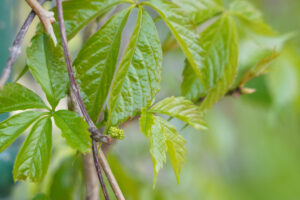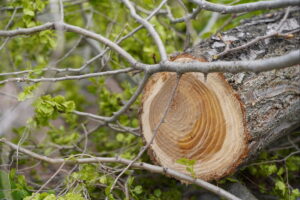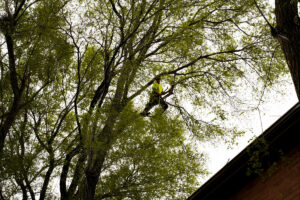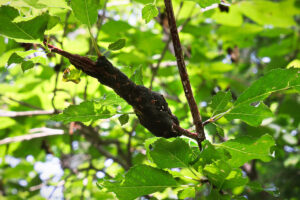Estate Tree Care: How to Protect Your Trees from Lightning
Of the different life forms on earth, trees are at the greatest risk of being killed by a lightning strike. Depending on how the lightning travels through the tree, its death is quick if the lightning blasts the trunk apart. Or slow if the lightning blows off bark and leaves the tree vulnerable to insects and fungus.
Trees are struck by lightning because of their great height and their water content, which is concentrated just under its bark in the cambium layer. Lightning seeks the easiest (most conductive) path to the ground. And the water content of a tall live tree often provides that path. The electric current of a lightning bolt vaporizes the water in the cambium layer with an explosive force that blasts away the bark. This leaves a long bare strip along the tree trunk that traces out the path of the lightning on its way to the ground. If the tree cannot \”heal\” this wound without becoming overwhelmed by insect, fungus, and attack from other pathogens, the tree eventually dies.
Trees You Should Protect from Lightning
If you have a mature beautiful tree or one of historic value, it enhances your property value. Protecting it with a lightning protection system makes sense. This is especially true if its species or its size and location makes it prone to lightning strikes. Tall trees or trees standing by themselves are at a higher risk.
Lightning can hit a tree and then side-flash or jump to a nearby structure of greater conductivity, such as the aluminum siding of a building. Therefore, trees within ten feet of a building or that overhang it, should have a lightning protection system.
Lightning Protection Systems
Lightning protection systems for trees are similar to those used for buildings. Air terminals (lightning rods) at the top of the major trunks of a tree are connected by copper cabling to ground rods located beyond the tree\’s root system. This provides a more conductive path to the ground than the tree itself. Therefore, the lightning bolt bypasses the tree trunk in favor of the copper cabling.
If you have any questions about tree protection from lightning; or would like a lightning safety audit conducted by an estate tree care professional, contact us. You can follow along on Facebook and Instagram, or you can contact us here if you have any questions.





